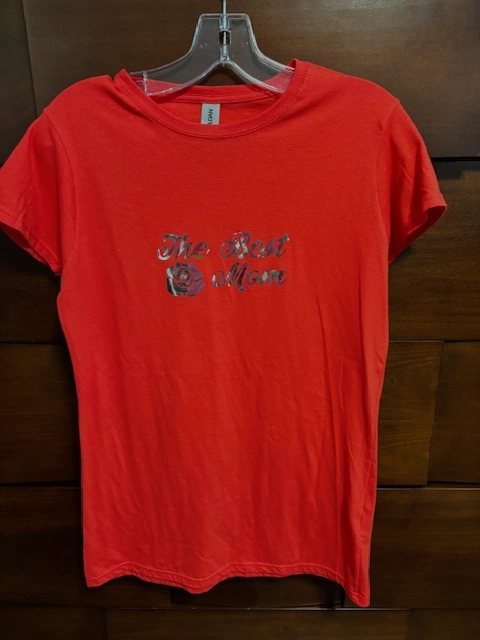Personalized Lab Coats with Embroidery for Medical Professionals
Personalized Lab Coats with Embroidery for Medical Professionals
Blog Article
The Art of Custom-made Needlework: Opening the Secrets to Creating Unique and Unforgettable Styles
Needlework, a craft soaked in practice and artistry, holds within its elaborate stitches the power to change fabric into a canvas of special expression. The keys to developing personalized needlework layouts that captivate the eye and leave a lasting impression lie in a delicate balance of method, creative thinking, and focus to information. As we dive right into the globe of custom-made needlework, we discover the nuanced interplay between thread selection, stitch complexity, and design personalization that boosts a plain garment to a masterpiece. Join us on a trip with the art of custom-made embroidery as we decipher the mysteries behind crafting truly memorable and distinctive creations.
Selecting the Right Needlework Threads
When picking embroidery strings, what key aspects should you consider to make sure the most effective results for your custom-made designs? The selection of needlework string is important in establishing the last end result of your embroidered style. Among the main factors to consider is the product of the thread. Various products such as cotton, polyester, rayon, and silk supply varying degrees of luster, sturdiness, and appearance. It is vital to choose a string product that enhances the textile you are embroidering on and aligns with the desired appearance of the layout.
Thicker strings can include dimension and appearance to your layout, while finer strings are optimal for intricate information and little message. Furthermore, considering the shade fastness and washability of the thread is essential to make certain that your custom-made designs preserve their quality and vibrancy over time.
Discovering Different Stitch Strategies
To explore the world of 'Exploring Various Stitch Techniques', one need to understand the details and nuances that each sewing technique brings to the art of embroidery. Various stitch methods not just add aesthetic interest however additionally add to the total texture and measurement of the design. One prominent stitch technique is the satin stitch, which includes very closely jam-packed parallel stitches to develop a smooth and shiny surface, perfect for filling in shapes and developing bold details.
On the various other hand, the backstitch is a versatile method usually used for detailing and including great details. It involves stitching in reverse to develop a solid line of embroidery. Furthermore, the French knot stitch includes a responsive element to styles, best for developing distinctive accents like blossom centers or ornamental touches.
Checking out various stitch strategies permits embroiderers to play with light, shadow, and depth within their styles, raising the aesthetic allure and imaginative top quality of their embroidery projects. By mastering various stitching techniques, one can unlock unlimited possibilities for developing one-of-a-kind and memorable customized embroidery pieces.
Incorporating Personalized Design Elements
Having explored the complexities of different stitch techniques such as the satin stitch, backstitch, and French knot, the focus now moves towards including personalized style components in custom embroidery jobs. Customized layout components play a crucial duty in making needlework jobs really distinct and memorable. One way to include customization is by adding initials, names, or significant days to the layout. This not only adds a personalized touch yet likewise enhances the sentimental worth of the embroidery piece.
An additional method to incorporate individualized design components is by including signs or motifs that hold unique meaning to the recipient or show their interests and character. Integrating a favored flower, pet, or hobby-related icon can make the embroidery layout much more purposeful and customized. In addition, selecting shades that resonate with the recipient or line up with the desired theme can better enhance the personalization of the needlework task.
Mastering the Art of Color Control
One trick Bonuses aspect of shade coordination is comprehending color theory. This consists of understanding just how different colors interact with each other, the feelings they convey, and exactly how they can be incorporated to create aesthetically enticing designs. By using shade theory concepts, embroiderers can create unified color combinations that boost the overall appearance of the layout.
Furthermore, taking note of contrast is crucial in color sychronisation. Making use of contrasting colors can assist particular elements of the style pop, boost clarity, and develop an aesthetically vibrant embroidery piece. By grasping the art of color sychronisation, embroiderers can raise their layouts and develop memorable pieces that reverberate with customers and visitors alike.
Enhancing Texture With Advanced Needlework Stitches

French knots, as an example, are excellent for adding small, increased dots to your style, resembling the appearance of grains or creating a textured surface. Bullion knots, on the other hand, can be utilized to develop you can try here twisted, ropelike components that include an extravagant feeling to the needlework. Seed sewing entails little, scattered stitches that can fill out areas with a speckled texture, while turkey work creates fluffy, dimensional accents reminiscent of animal fur or foliage. Try out these advanced embroidery stitches allows you to push the boundaries of traditional needlework and develop absolutely one-of-a-kind and aesthetically enticing appearances in your layouts.
Conclusion
Finally, the art of custom embroidery involves a combination of choosing the right strings, discovering various stitch strategies, incorporating personalized style components, grasping color sychronisation, and enhancing structure with sophisticated stitches. By understanding and carrying out these crucial elements, embroiderers can develop unique and remarkable styles that showcase their creative thinking and skill. Embroidery enthusiasts can open the keys to creating attractive and custom pieces that stand apart and leave a long lasting perception.
Report this page